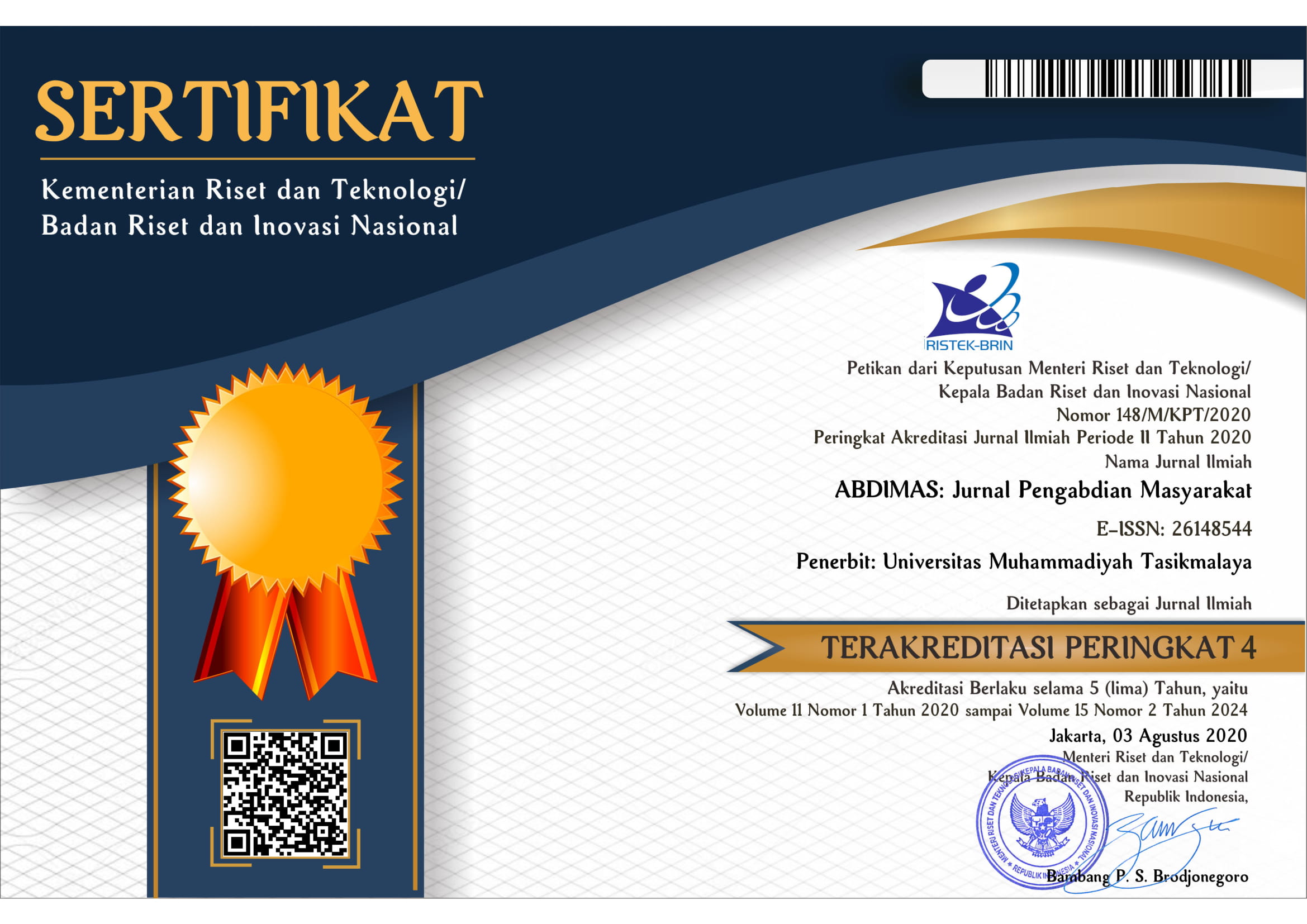Accompaniment for Supplying the Chain in the Marketing of Sweet Potato (Ipomea batatas L)
DOI:
https://doi.org/10.35568/abdimas.v4i2.1503Keywords:
Pendampingan, ubi jalar, pemasaran.Abstract
Kuningan Regency is the area that has potential in agriculture. One of the leading commodities in Kuningan Regency is sweet potato (Ipomea batatas L). Sweet potato cultivation continues to be developed, even in Cilimus District, it is known as one of the productive production centers in the West Java region which provides sweet potato supplies to several areas to supply sweet potato needs in the West Java region. The problems are faced by farmers today including the increasingly erratic price of sweet potatoes, lack of market opportunities, product diversification, and mastery of cultivation technology. This service activity was carried out in Cilimus Village, Cilimus District, Kuningan Regency with partners of sweet potato farmers. The purpose of this assistance is to provide supply chain assistance for sweet potato marketing so that farmers are able to continuously market sweet potatoes above the production price. Mentoring activities were started from identification of sweet potato problems at the farmer level, identification of production and identification of markets. The using of method is interactive discussion and market mapping conducted together with farmers. Focus Group Discussion (FGD) was used to confirm the cultivation system, production, and marketing system of sweet potato. The result of this activity is that farmers know the marketing potential of sweet potatoes other than middlemen and the quality criteria of sweet potatoes according to industry demand. In addition, farmers also use sweet potatoes as animal feed.
Downloads
References
Department of Agriculture. Agricultural Profile of Kuningan Regency. 2006.
Widowati S. Diversification of Sweet Potato-Based Food Consumption. J Food. 2010;20(1):49–61.
Widodo Y. Practical Sweet Potato Cultivation Technology Supports Food Security and Agroindustry. Bul Palawija. 2014;0(17):21–32.
Sirait J, Simanihuruk K. Potential and Utilization of Cassava and Sweet Potato Leaves as Feed Source for Small Ruminants. Wartazoa. 2010;20(2):75–84.
Aumont O, Pierre U, Marie ET, Paris C, Gómez-Letona M, Ramos AG, et al. No Title No Title No Title. Biogeosciences [Internet]. 2018;43(5):679–94. Available from: http://www.unil.ch/ssp/page34569.html
Limbongan J, Soplanit A. Technology availability and development potential of sweet potato (Ipomoea batatas L.) in Papua. J R & D Pertan. 2007;26(4):131–8.
Suismono. Processing technology and utilization of local food based on tubers. J Food. 2008;(52):38–50.
Central Bureau of Statistics of Kuningan Regency. Sweet Potato Production [Internet]. 2015. Available from: https://kuningankab.bps.go.id/statictable/2015/04/30/26/hasil-tanaman-pangan-padi-dan-palawija-2011.html














